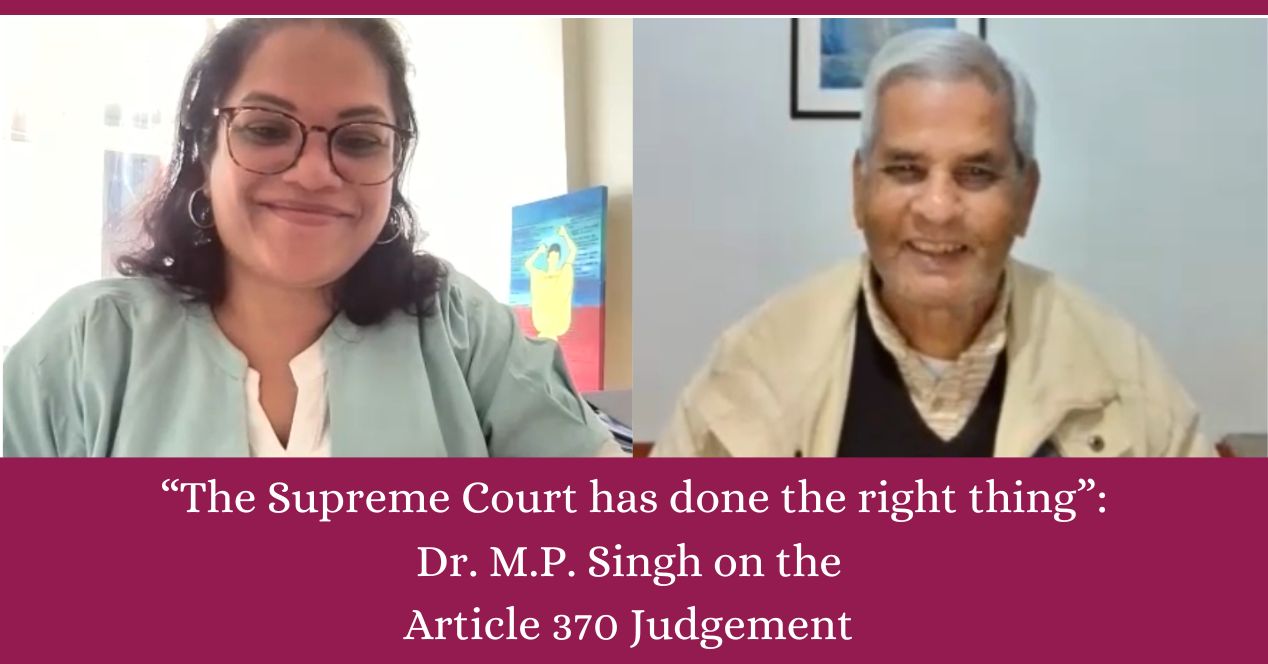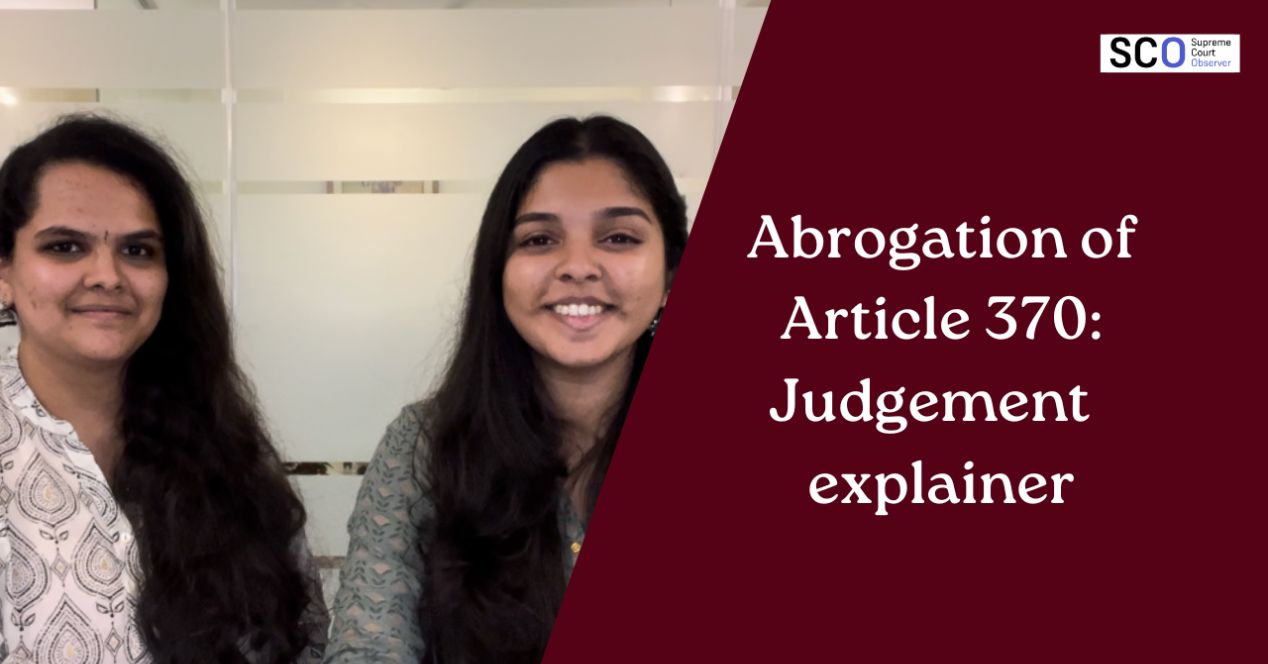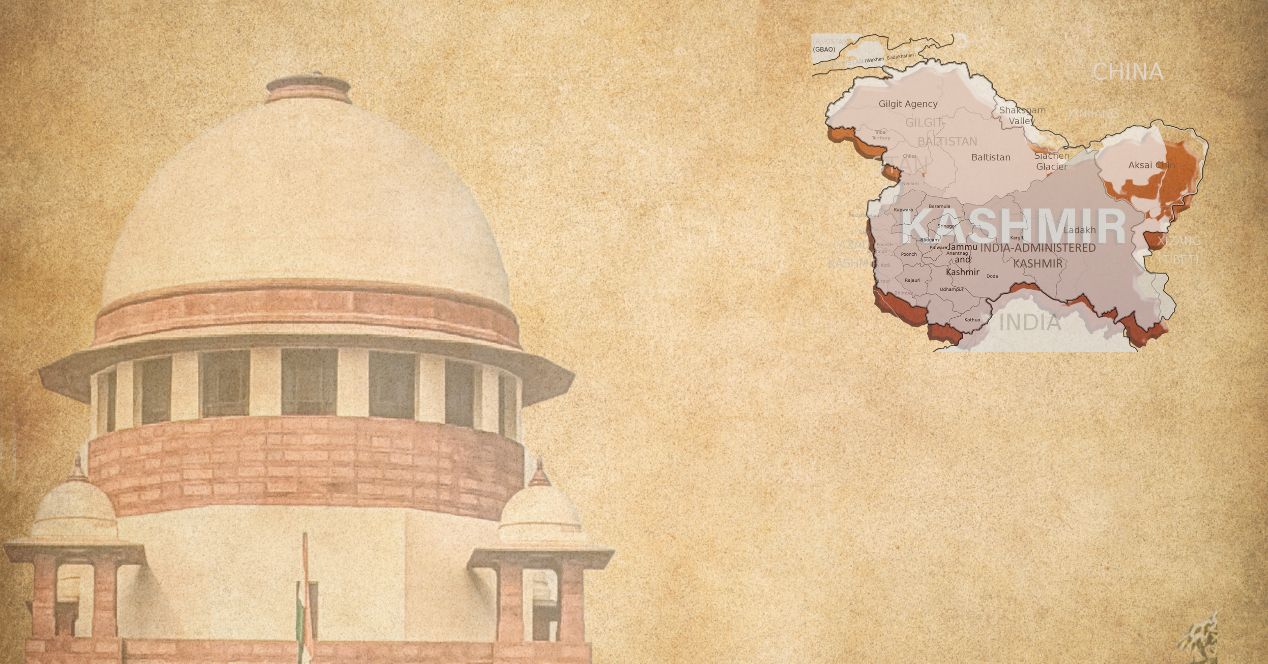Analysis
Article 370 ruling: A response to Professor Mahendra Pal Singh
By reducing the abrogation to presidential discretion, Singh ignores the framework on which the relationship of J&K and Union was predicated

In the current landscape where political rhetoric outshouts judicial interpretation, one turns to academia for genuine critical reflection. Yet, Professor Mahendra Pal Singh’s views on the recent Article 370 Supreme Court ruling in a video interview to this publication come across as centred around celebratory validation rather than rigorous scrutiny.
Many years ago, Professor Singh’s legal scholarship laid the foundation of my legal journey as a young student of law. That’s why his views on the ruling on Kashmir’s constitutional autonomy are doubly disappointing, conspicuous as they are by a lack of nuanced and evidence-based analysis. This article highlights three key themes that flesh out my disagreements with Professor Singh’s stance.
First, Professor Singh states that the President of India has “discretion” to abrogate Article 370. A textual and historical analysis of Article 370, however, implies that Article 370 is a sui generis provision with an inherent procedure for any possible alteration or revocation. This process is intricately linked to the concurrence of Jammu and Kashmir’s Constituent Assembly. That J&K’s Constituent Assembly was dissolved on 26 January 1957 after giving the state its own Constitution and ratifying the constitutional arrangement under Article 370 undermines the notion of unbridled presidential discretion.
Furthermore, the presumed “discretion” is not solely driven by individual motivations, contrary to Professor Singh’s portrayal. Looking back over seven decades suggests that the ultimate decision regarding the fate of Article 370 necessitated the consent of the people of J&K. This crucial step, however, was skipped prior to the abrogation of the state’s special status on 5 and 6 August 2019.
Against this backdrop, a structural reading of the Constitution reinforces the argument that the normative framework within Article 370 constituted the only constitutionally viable route for amending or abrogating the Article. I also want to dispel the misconception propagated by some critics that Article 370 could have been amended through the conventional route outlined in Article 368. This approach is refuted by the limitations delineated in the Constitution Order of 1954 which stipulates that all amendments made under Article 368 are contingent upon adherence to the procedural requisites outlined in Article 370 for J&K.
Second, long-standing scholarship and prior rulings of the Supreme Court affirm that J&K relinquished external sovereignty while retaining internal sovereignty when it signed the Instrument of Accession in 1947. It is crucial to recognise that this unique federal model had already been enshrined in the constitutional fabric through Article 370. However, Professor Singh appears to overlook this distinctive asymmetric federal structure. The division of sovereignty represents a specialised framework grounded in a blend of pragmatic politics and constitutional principles.
This crucial aspect was once validated by a five-judge Constitution Bench in Prem Nath Kaul but that seems to have faded from the Court’s recollection. The Court’s earlier pronouncement explicitly stated: “The proclamation issued by the Yuvaraj on November 25, 1949, did not vary the constitutional position as it stood after the execution of the Instrument of Accession by the Maharaja nor could it in any way affect the authority conferred on the Yuvaraj by his father.” In its judgement in the present case, the Supreme Court indexed heavily on this very proclamation that it had earlier deemed ineffective.
Even when considering a broader context beyond J&K in S.R. Bommai v. Union of India (1994), the Supreme Court had emphatically affirmed the sovereignty of states. There, it declared that “states are sovereign in the field which is left to them. They have a plenary authority to make any law for the peace, order and good Government of the State.” However, Professor Singh seems untroubled by these views, asserting that “sovereignty has to be one for the country” and contending that having two constitutions within a country would be challenging.
It is worth reminding Professor Singh that the concept of divided sovereignty is not only conceivable but has been successfully implemented in various jurisdictions. In the United States of America and Australia, for instance, federal units (states) maintain their own flags and constitutions, showcasing a model of divided sovereignty. In these countries, states willingly limit themselves while preserving their internal sovereignty, demonstrating the feasibility of a nuanced and decentralised constitutional framework within a unified nation.
Third, on the questions of J&K’s degradation of statehood, Professor Singh argues that the Union Government has followed the procedure under the Constitution, referring to Article 3. This flies in the face of the text and context of Article 3 which places inherent limitations on Parliament’s power to alter the status of states. Although it allows Parliament to “form a new State…by uniting two or more States”, it doesn’t provide for the complete dissolution of a state or changing its status to a Union Territory.
The Constitution Order of 1954 added a second proviso to Article 3 requiring “consent” of the legislature of the state for any changes to be effected by the Union with regard to the state under Article 3. While it is true that the views expressed by the legislature under the first proviso to Article 3 are not binding on Parliament, the circumstance was expressly modified for J&K. In the context of J&K, the proviso in the 1954 Constitution Order clearly required the consent of the state legislature of J&K for a Bill to be introduced in Parliament under Article 3. Since J&K was under President’s Rule in the run-up to the abrogation, it appears this consent was taken from the Union Parliament, which violates the constitutional arrangement between the state and the Union.
Professor Singh disregards this manipulation orchestrated by the Central Government within the contours of Article 3. This manipulation is glaringly evident in the Presidential Order of 2019, which effectively superseded the 1954 Order. This manoeuvre undermines the established constitutional framework and raises concerns about the preservation of J&K’s autonomy.
Astonishingly, the Supreme Court chose not to address the critical question on the scope of power under Article 3, deferring it to an unspecified appropriate time. Professor Singh, however, doesn’t address the subtleties of this judicial evasion.
Even when setting aside the legal and logical shortcomings in Professor Singh’s endorsement of the Supreme Court ruling, a crucial revelation emerges. Perhaps inadvertently, Professor Singh concedes what many had feared—that the Supreme Court’s primary role was to “protect” the interests of the Union of India. Here’s what he says:
“…The expectation was that the Supreme Court will not create fresh problems for the Union of India. And by endorsing its decision, it has actually solved or, in a way, protected the Union of India from the troubles which could have arisen if the judgement was any different.”
In my reading, this acknowledgement sheds light on the potential biases and underlying motivations that may have influenced the Court’s stance. It points to the fact that the Court has legitimised the legal jugglery the Central Government had to undertake to justify an essentially political act. The fact remains that the Article 370 judgement is neither legally nor morally sound.
Burhan Majid is an Assistant Professor of Law at Jamia Hamdard, New Delhi and a doctoral fellow at NALSAR University of Law, Hyderabad. He tweets @burhanmajid.




